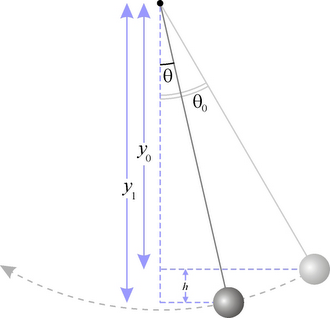![Overview[edit]](https://www.universator.com//img/modified_newtonian_dynamics_wikipedia_the.jpg)
Note: This is a multi-page article.
To navigate, use the drop-down lists and arrow keys at the top and bottom of each page.
This article set is a gravitation resource — a handy compilation of gravitational physics descriptions, methods and equations, with some related topics like inertia and centripetal force. It addresses Newtonian gravitation, the classic first-order approximation of relativistic gravitation that is most useful in everyday gravity calculations. Some relativity facts are included when they are needed to complete a thought, for example with respect to energy, but relativity is not the primary topic.
Many of the gravitational explanations that appear here are derived from my other articles. This article unites them by topic and provides a narrative overview.
Before moving on to specific topics, let's set the stage with some key constants and ideas. Newtonian gravity is pretty easy to understand — it revolves around a handful of values and a single equation from which many others derive:
G is the universal gravitational constant. This constant is estimated to be equal to $6.67428 × 10^{-11} \frac{m^3}{kg\ s^2}$. It is also known as "Big G" to distinguish it from little-G, to be described below.
Among natural physical constants, G is not known to very high precision, in spite of its importance. This arises from the extraordinary difficulty involved in measuring it.
Gravitational Force Equation
(1) $\displaystyle f = G \frac{m_1 m_2}{r^2}$Where:
- G = Universal gravitational constant, described above.
- $m_1, m_2$ = Two masses in mutual attraction, units kilograms.
- r = distance between $m_1$ and $m_2$, meters.
Note that gravitational forces are almost always computed with respect to the centers of objects. For example, Earth's gravitation can be computed as though all its mass was located at a point in its center. For reasons beyond the scope of this article, for a uniform mass, this is a perfectly valid simplifying assumption.
Little-g
"Little-G" is a derived value for gravitational acceleration on Earth's surface. Here is how little-G is computed:
First term: Gravitational acceleration ($a_g$ in Figure 1)
Figure 1: Factors in little-g
We begin with a form of equation (1) and the following constants:
- $e_m$ = Earth's mass: 5.9736 × 1024 kilograms.
- $e_r$ = Earth's radius: 6.371 × 106 meters.
- $G$ = Described above.
This produces:
(2) $\displaystyle a_g = G \frac{e_m}{e_r^2} = 9.82257 \frac{m}{s^2} $ for small masses.INTERESTING VIDEO



 The mathematics of pendulums are in general quite complicated. Simplifying assumptions can be made, which in the case of a simple pendulum allows the equations of motion to be solved analytically for small-angle oscillations.
The mathematics of pendulums are in general quite complicated. Simplifying assumptions can be made, which in the case of a simple pendulum allows the equations of motion to be solved analytically for small-angle oscillations.







